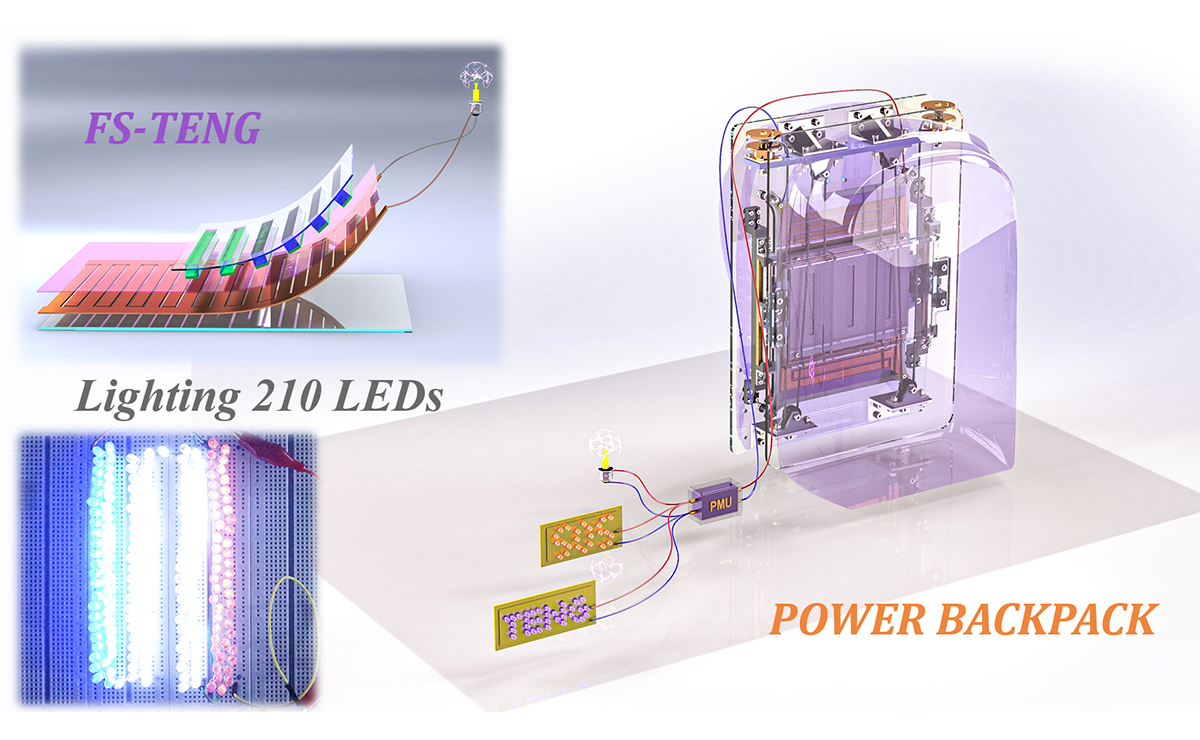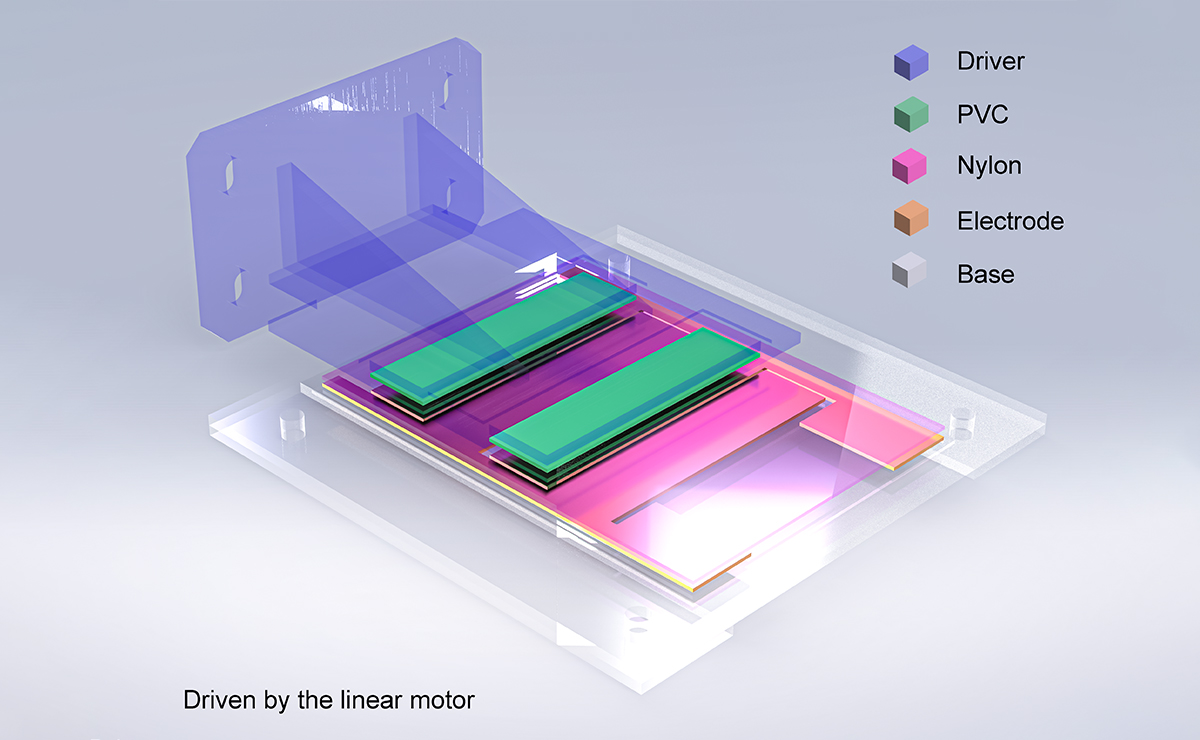A backpack that generates electricity while reducing the wearer’s load.
A prototype backpack that can generate electricity as well as reduce load on the wearer has been designed by Jia Cheng, Zhong Lin Wang and their team.
The backpack uses a triboelectric nanogenerator to convert mechanical energy from walking or running into electrical energy via the coupling effects of triboelectrification and electrostatic induction — a generation and redistribution of charges in an object caused by the changeable electrostatic field.
Movement power
But first, the design of the backpack, detailed in ACS Nano in 20211, had to optimize the effect of natural walking movement, says Cheng. “Our backpack decouples the synchronous movement between the backpack and the body,” he explains.
This was achieved by a plate that slides on two rails fixed on the backpack’s frame. One end of an elastomer is attached to the top plate, and the other end is attached, through two fixed pulleys, to the frame. During walking or running, the frame of the backpack moves up and down, causing the two elastomers to stretch and shrink.

A triboelectric nanogenerator (TENG) attached to a load-suspended system within a backpack can help convert mechanical energy into power for LEDs. It has great potential to create enough electricity to support a phone and/or navigation device.
As well as acting as shock absorbers, the movement triggers the generation of electricity by using a triboelectric nanogenerator, which comprises polyvinyl chloride films, nylon films and metal electrodes. “The polyvinyl chloride films slide on the surface of the nylon films and, as a result, induce charges of different polarities on the two metal electrodes underneath the nylon films,” says Cheng.
“The potential difference between the two electrodes produces current in the circuit, converting mechanical energy to electrical energy. The energy conversion efficiency is 14% and the instantaneous power density is 58 W m-2,” he says.
By harnessing the movement of the body, the backpack provides a continuous energy supply that can power devices such as an array of 210 LED lights, a low-watt electronic watch or a series of ultraviolet tubes. When the wearer with the LED-laden backpack walks on a treadmill, the light shines brighter as the walking speed of the wearer increases.

The triboelectric nanogenerator comprises polyvinyl chloride films (green) that slide against the nylon films (pink) and induce charges on the metal electrodes (orange).
Controlling the rhythm, decreasing the load
The vertical oscillation of the load on the wearer can be reduced by roughly 29% and the vertical force declines by roughly 21%. Within the allowed weight for the elastomer, the faster the wearer walks, the greater the wearing force is reduced and hence, the lighter the backpack feels.
In future modifications, the researchers aim to improve the backpack’s performance by changing the stiffness of the suspension system to adapt to different loads and motion frequencies, as well as using stronger elastomers that can withstand heavier loads. “The weight of the backpack is about 3 kg, which is a little heavy for wearers,” says Cheng. “In the next-generation backpack, we would like to incorporate more lightweight materials.”
The researchers envisage self-powering more energy-demanding devices such as BeiDou or GPS systems, sensors for healthcare applications, and a cell phone, by incorporating a power management circuit into the electricity generation unit of the backpack.
Reference
Yang, Z. et al. Power Backpack for Energy Harvesting and Reduced Load Impact, ACS Nano, 15, 2611-2623 (2021). https://doi.org/10.1021/acsnano.0c07498